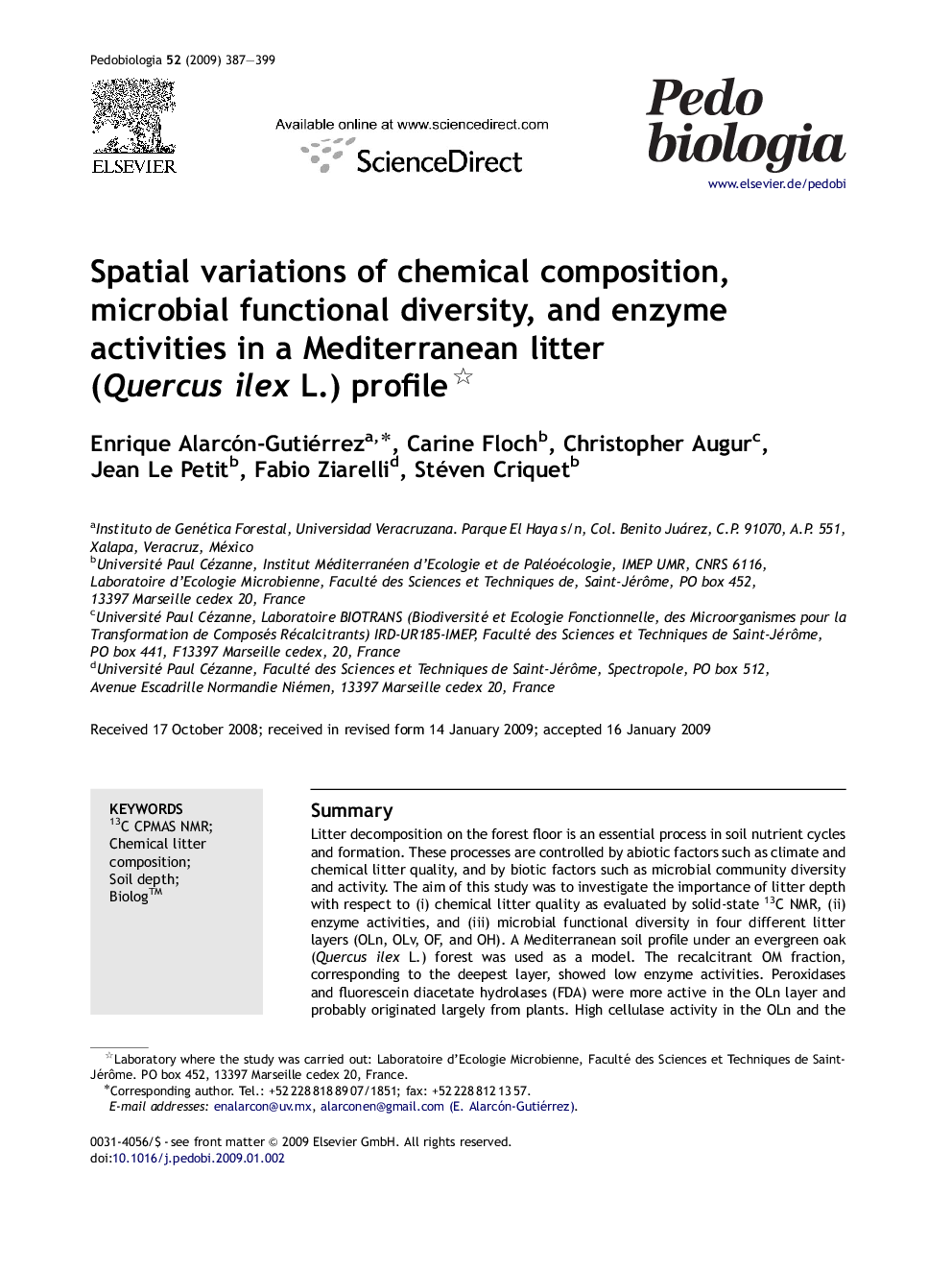| کد مقاله | کد نشریه | سال انتشار | مقاله انگلیسی | نسخه تمام متن |
|---|---|---|---|---|
| 2061524 | 1076497 | 2009 | 13 صفحه PDF | دانلود رایگان |

SummaryLitter decomposition on the forest floor is an essential process in soil nutrient cycles and formation. These processes are controlled by abiotic factors such as climate and chemical litter quality, and by biotic factors such as microbial community diversity and activity. The aim of this study was to investigate the importance of litter depth with respect to (i) chemical litter quality as evaluated by solid-state 13C NMR, (ii) enzyme activities, and (iii) microbial functional diversity in four different litter layers (OLn, OLv, OF, and OH). A Mediterranean soil profile under an evergreen oak (Quercus ilex L.) forest was used as a model. The recalcitrant OM fraction, corresponding to the deepest layer, showed low enzyme activities. Peroxidases and fluorescein diacetate hydrolases (FDA) were more active in the OLn layer and probably originated largely from plants. High cellulase activity in the OLn and the OLv layers, which are rich in polysaccharides, corresponded with the high content of O-alkyl carbon compounds. Following polysaccharide degradation, laccases and lipases were much more evident in the intermediate layers. This spatial variation in nutrient demand reflected a preferential degradation of the specific plant polymers. Phosphatases were more active along the three upper layers and probably reflected a P limitation during litter degradation. Alkaline/acid (AcPAlP/AcP) ratio increased in the deepest layer, suggesting an increased participation of bacteria AlP in phosphatase pools. Results of BiologTM also indicated spatial variations in microbial functionality. Indeed, FF plates showed the highest functional diversity in the uppermost layer, while ECO plate functional diversity was highest in the intermediate layers. Finally, our results indicated that microbial activity and functional diversity of micro-organisms change with litter depth on a very small scale and vary with chemical organic matter (OM) composition. Thus, the observed increases in the biological variables studied were determined by the evolution of OM chemical structures, the nature and availability in C nutrients, and they ultimately resulted in a progressive accumulation of recalcitrant compounds.
Journal: Pedobiologia - Volume 52, Issue 6, 25 September 2009, Pages 387–399